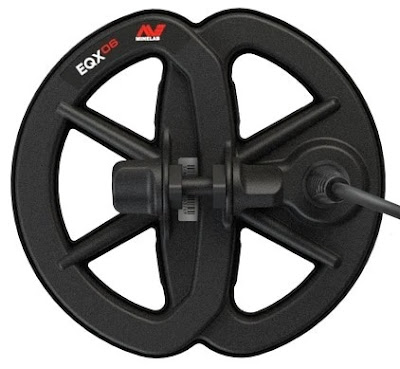Coil Size & Unmasking Does It Matter?
Unmasking and coil size is something that's always interested me, it's clear that the overall viewpoint is the smaller the coil the better it is at unmasking. Something about this theory never sat quite right with me, surely if you use a small coil then the iron would appear much larger to the machine. I hear the term "you can get in-between the iron", there's part of me that sort of understands that because the smaller the coil the less surface area is communicating with the ground. This means 'in theory' that you're not going to get as many targets under the coil all at once, so if you have sporadic iron with nonferrous targets in close proximity there's potentially more chance of hitting that target without a load of iron being under the coil at the same time. However there's part of me that feels the "small coil" theory is just another misconception that's been made real through years of "metal detecting whispers".
The aspect we must not forget here, in the mainstream, all metal detector coils are double D and due to this configuration they're limited within their ability to see masked targets. This coil design alone can put you at a disadvantage on iron contaminated ground, it doesn't matter what settings you have on your machine or how high your recovery setting is. The simple fact is, one coil can't do it all, that might come as a surprise to some but the importance of the coil still doesn't quite hit home with to many people out there.


Its my impression that the detection pattern of concentric coils is a cone extending downwards into the ground, and a double d coils pattern is a rectangle below the area the receive and transmit coils overlap in the middle. A concentric coil could detect only a pinpoint by lifting the coil sbove the ground, but the DD coil pattern would still be linear if lifted. A DD coil would discriminate more during sweeping but a concentric would be better when the target has been aquired already because you can narrow the detected area by lifting the coil.
ReplyDeleteYou might want to do some experiments on off axis/side detection of objects with different size and different types of coils and see what the results are.
DeleteThat’s a big coil, very interesting results. I am definitely curious, like you said in your video, how a large concentric coil compares. But, seeing how the DD coil reacts reacting to the coin one way leads me to believe I’ve left some stuff in the ground I should’ve dug in the past. I have dug some oneway signals with my XPD2 but more often than not, it’s falseing on iron. But that’s a totally different type of machine. I’m really looking forward to receiving my V3 and what’s good for me is I’ve never owned a “analog” before so there won’t be any preconceived notions on how it should work. Thanks for posting and excellent blog.
ReplyDelete